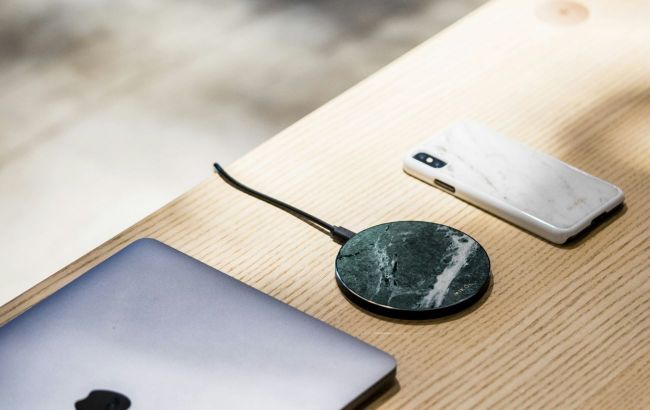Pros and cons: Key facts and recommendations for using wireless charging
 What is wireless charging and how does it work (photo: Unsplash)
What is wireless charging and how does it work (photo: Unsplash)
In the world of modern technology, wireless charging is becoming an increasingly common and convenient way to keep devices charged. The transition from traditional charging methods to wireless technology brings significant changes to everyday life.
How wireless charging appeared
In 1820, André-Marie Ampère proved that electric current creates a magnetic field, and in 1831, Michael Faraday discovered the law of induction, which became the basis for modern wireless charging.
In 1888, Heinrich Hertz confirmed the existence of the electromagnetic field. His research helped Nikola Tesla to transmit energy over a distance for the first time. Until the end of the 20th century, many scientists experimented with the transmission of energy over a distance in various ways.
Mass interest in wireless charging emerged only after the boom in mobile devices in the 21st century.
What are the wireless charging standards
To charge a smartphone wirelessly, a pair of coils is used: one in the charging station, which is connected to the power supply, and the other in the device. When current appears on the first coil, a magnetic field forms around it, which transfers it to the second.
The magnetic field appears because of the use of high-frequency alternating current. It is converted to direct current when it is transmitted to the device. Depending on the frequency of the current, magnetic induction or magnetic resonance is involved.
Magnetic induction stations
They transmit energy over a distance of about 10 mm and use an AC frequency of 100-357 kHz. To charge your smartphone with such a station, it must support a specific frequency range.
The magnetic field does not pass through metal, so wireless charging is only possible on smartphones with a glass or plastic back. In this case, even a thick protective case can interfere with the charging process.
Magnetic resonance stations
Unlike magnetic induction stations, they use a current frequency increased to 6.78 MHz. This allows you to expand the charging radius to 40-50 mm. Such wireless chargers also use a set of two coils. However, they do not need to be opposite each other, so chargers do not have to be made in the form of stands or mats.
What you need to know about the power of wireless chargers
Wireless chargers differ in terms of input and output power: they usually vary from 5 to 20 watts.
Its level is indicated on the device body, box, and the manufacturer's official website. It can also be found in reviews.
Some companies indicate voltage in volts and current in amperes instead of power in watts. You can use these values to find out how fast the device can be charged.
Wireless chargers may come without a power supply. You need to know their input power to determine which one is suitable for their full operation. If the input power is sufficient, the device should be able to deliver the maximum output power.
What you need to know when using wireless charging
How to place your smartphone on the charging station
- Place your smartphone in the wireless charging center or the place provided by the manufacturer
- Make sure that charging has started. If it does not, your smartphone does not support this method of power transfer or you are using a case that is too thick
How to avoid overheating during wireless charging
During wireless charging, your smartphone gets hotter than usual. To avoid overheating, it may temporarily turn off power transfer when the battery reaches 80 percent.
Do not use bulky cases that interfere with heat transfer. Do not place any foreign objects on the charging device. It is dangerous to cover it with a cloth that will restrict air circulation.
How long can a smartphone be on wireless charging
Your smartphone can be wirelessly charged overnight. When the battery reaches 100 percent, the power transfer will stop.
The key is to use a high-quality charger, cable, and power supply to avoid short circuits.
Advantages of wireless charging
- You can simply put your smartphone on the charger, and it will immediately start replenishing energy.
- No need to look for a cable with a suitable connector (Lightning, microUSB, USB-C)
- Reduced wear and tear on power cables, ports, and connectors
Disadvantages of wireless charging
- Wireless charging is slower than wired charging due to lower efficiency
- The charging station is rarely included in the kit, usually, you have to buy it separately
- You cannot fully use your smartphone while charging
- If you accidentally move the smartphone lying on the station, charging may stop
- Thick protective cases and cases with metal parts can interfere with wireless charging
- Wireless charging is not always convenient to take with you
A wireless charger is convenient on your desk. You can put it on your nightstand and put your smartphone on it before going to bed. But it's not so convenient to take it on a trip and use it on the go.

